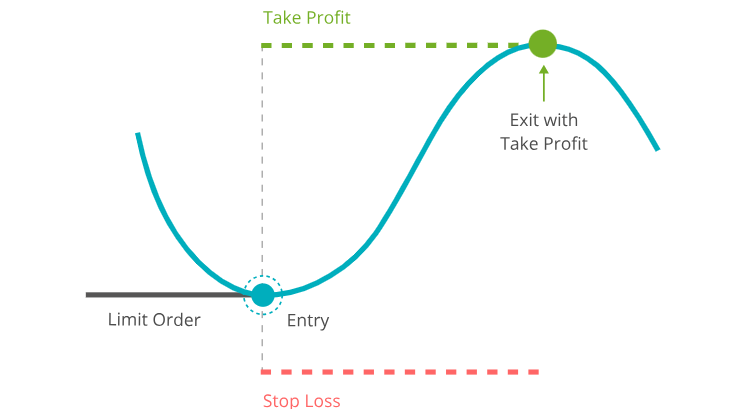Setting a stop loss on Coinbase is an essential risk management technique for cryptocurrency traders. It enables you to protect your investment by automatically selling the funds if the value drops below a specific point.
This article will guide you through the method of placing a stop loss on Coinbase, one of the most prevalent cryptocurrency exchanges.
How can I put a Stop Loss on Coinbase?
Here are the steps to set up a Stop Loss on Coinbase:-
- Sign in to the Coinbase Account:
To begin, log in to the Coinbase account entering the username and password. If you are a new user just create one and complete the essential identity verification steps.
- Move to the Trading Dashboard:
As you log in, you will enter on the Coinbase page. From here, tap on the “Trade” or “Portfolio” tab to access the trading dashboard.
- Select the Cryptocurrency Pair:
Determine the cryptocurrency pair you desire to set a stop loss for. You can do this by tapping on the cryptocurrency’s name or sign in the trading dashboard. For instance, if you wish to put a stop loss for Bitcoin, choose the BTC trading pair you prefer.
- Open an Order Form:
Next, look for the “Buy” or “Sell” tab, depending on whether you expect to set a stop loss for a long or short position. Tap on it to open an order form.
- Set the Stop Price:
In the order form, you will see an option to put a stop price. This is the cost at which the stop-loss order will be instigated. Enter the price at which you want to sell the cryptocurrency to limit potential losses.
- Select the Order Type:
Coinbase proposes different order types. For a stop loss, you will typically utilize a “Stop” or “Stop Limit” order. A “Stop” order will enforce the market order once the stop price is achieved, while a “Stop Limit” order will execute a limit order at the stop price. Select the option as per your requirement.
- Set the Quantity:
Stipulate the amount of cryptocurrency you want to sell when the stop price is attained. Check twice this amount to ensure it aligns with the risk surveillance goals.
- Check and Confirm:
Before setting the order, examine all the details carefully, including the stop price, order type, and amount. Make sure everything is precise and contemplate the trading strategy.
- Place the Stop Loss Order:
Once you are pleased with the order details, tap on the “Place Order” or “Confirm” tab to conduct the stop loss order. Coinbase will process the order, and it will be observable in the order history.
After placing the order, keep an eye on the market. If the stop price is caught up the order will be executed according to the parameters you set.
The above steps are also applicable for setting the stop loss in the Coinbase app.
How to set a stop loss on Coinbase Pro
- Login to Coinbase Pro account
- Navigate to the Trading Section
- Pick the pair for Trading
- Select the type of Order
- Specify the Stop Price and set the amount
- Check the details and tap the Confirm tab.
How to see gains and losses on Coinbase
In order to check for profit and loss on Coinbase there are a few steps to be followed:-
- Open the Coinbase app on a mobile device or visit the Coinbase website. Log in using the credentials.
- Once logged in, tap on the “Portfolio” tab. Here you can track the assets and view the gains and losses.
- In the Portfolio section, you will see a list of all the cryptocurrencies you hold. Each asset will show its current value, the quantity you hold, and the total investment in that asset.
- Coinbase equips a clear clue of the gains and losses for each asset. You can notice the percentage change in value since you bought the asset. A positive percentage implies gains, while a negative percentage indicates losses.
- Coinbase offers options to sort and filter the holdings. You can organize them by name, value, or percentage gain or loss. This enables you to identify which assets are performing well and which ones are not.
- To get a more detailed breakdown of the gains and losses, you can check on the transaction history. Tap on the specific asset you want to examine, and you will find a list of all the transactions related to that asset. This contains the purchase date, quantity acquired or sold, and the cost associated.
- If you require to maintain a record for tax purposes or further analysis, Coinbase authorizes you to export the transaction history. Look for the export tab, usually in the form of a CSV file, which you can download and save for the records.
- To stay informed about the performance of the assets in real time, consider setting up cost alerts. Coinbase authorizes you to put alerts for detailed price points, so you will be informed when an asset attains a particular value.
- Regularly monitor the portfolio’s performance over time. Coinbase provides charts and graphs that depict how the assets have fluctuated in value since the initial investments.
Conclusion:
Remember that crypto coins markets are highly volatile, and the value of the assets can rapidly change. Maintaining a close eye on the gains and losses on Coinbase can help you make informed decisions about your investments.
Setting a stop loss on Coinbase is an essential aptitude for cryptocurrency traders. It assists in protecting investments from significant losses in volatile markets. By following the steps outlined in this handbook, you can actually implement stop-loss orders and manage the risk while trading cryptocurrencies on Coinbase.
